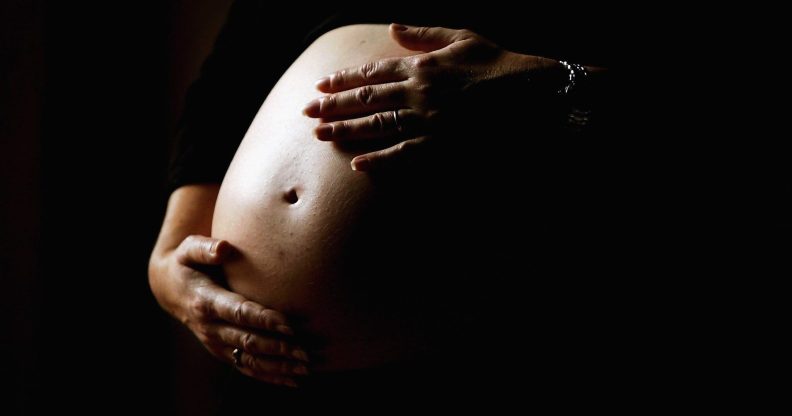Doctor plans pioneering womb transplant that could let trans women carry children

A doctor in India is hoping to allow trans women to carry children through a groundbreaking operation. (Ian Waldie/Getty Images)
A doctor in India is planning to perform a womb transplant on a trans woman.
The first successful uterine transplants took place at the University of Gothenburg in Sweden in 2014, before the operation was carried out once more in the US two years later.
Less than a decade on, Dr Narendra Kaushik, a New Dehli surgeon, hopes to carry out the first uterine transplant into a trans woman.
Kaushik will perform the surgery at his practice, he told the British newspaper The Mirror.
“This is the future,” he said, adding that he hopes the surgery will allow trans women to carry children.
“The way towards this is with a uterine transplant, the same as a kidney or any other transplant.”
Isabella Thalund, a 33-year-old trans woman who flew from Denmark to Dehli to undergo gender-affirming surgery by Naushik’s hand, told The Mirror: “Couples and single women can get help with conceiving. I don’t really consider this all that much different.”
Uterine transplants are currently rare, costly and experimental surgeries that typically rely on organs from living or dead donors. They are often done on people born without a uterus so they can become pregnant and give birth.
A transplant has been carried out on a trans woman once before – Danish artist Lili Elbe, the subject of the film The Danish Girl, in 1931 – but she died of complications months later.
Kaushik, who has 15 years of experience in gender-affirming surgeries, remains optimistic.
“We cannot predict exactly when this will happen but it will happen soon,” he explained. “We have our plans and we are very optimistic about this.”
Uterine transplant surgery sees doctors carefully remove the uterus, cervix, part of the vagina as well as small uterine vessels that carry blood to the organ from a donor. A uterus can survive for at least six hours outside the body.
Then, the donor’s uterus is connected to the recipient’s vagina. It’s a complex and precarious procedure and, because remnant fallopian tubes are not connected to the transplant, the operation does not lead to the recipient conceiving through sex.
Such transplants are generally temporary. Experts recommend the uterus be removed after the person gives birth to one or two children for safety reasons.

